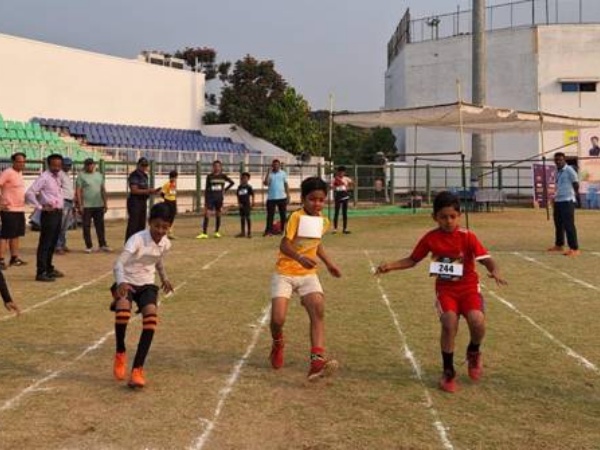views : 724
3 Min Read
Sports Ministry’s ambitious talent identification plan comes to a standstill
Khelo India Rising Talent Identification (KIRTI), the Ministry of Youth Affairs and Sports’ ambitious and well-intentioned programme to spot talent across the country, has apparently come to a standstill after completing less than 10 per cent of the stated goal of 20 lakh assessments for 2024-25.
Responding to an RTI query, the Khelo India Division of Sports Authority of India said on May 14 that 1,87,921 assessments were conducted at 174 locations across the country in the two phases so far. These assessments in 11 disciplines, conducted in Talent Assessment Centres, included 10 tests to measure physical attributes of athletes and some sports-specific tests.
The RTI response side-stepped a question if the project has been stopped even before 2 lakh children were assessed. “Till date, KIRTI assessments have been carried out in two different phases. During Phase I, 49,834 assessments were conducted across 65 locations. In Phase II, the number of assessments were increased to 1,38,087 at 109 locations,” it said.
According to statistics on the Khelo India website as of now and the Minister’s reply to an unstarred question in the Rajya Sabha on December 19 last, the top States in terms of assessments across two phases were Maharashtra (25434), Haryana (12548), Delhi (12544), Assam (11361) and Andhra Pradesh (10954). The numbers have not changed in five months.
KIRTI was started as an initiative to discover talent through scientific methods and technology ensuring a streamlined process for grassroots talent identification, particularly in rural areas. The Ministry had said a scouting and assessment programme of this scale was a first in India and came time when the nation wants to become a top 10 sports nation by 2036.
It was launched from Panchkula on March 12 last year by the then Union Minister for Youth Affairs and Sports Anurag Singh Thakur. It got a ‘fresh boost’ when Dr Mansukh Madaviya, who took over as the Minister for Youth Affairs and Sports after the general elections, inaugurated Phase II of the project on July 19.
It was envisioned to develop an integrated talent identification architecture based on modern ICT tools and global best practices. It aimed to streamline the process of grassroots talent identification on a single platform and claimed the project was based on an athlete-centric approach making talent identification more broad-based and accessible.
However, and disappointingly, we remain unaware if any talent that could be performing well for India in the 2026 Olympic Games was discovered by KIRTI programme. We are told that the Sports Authority of India is analysing the data collected from the 1,87,921 assessments that were conducted. We will have to await the outcome of that exercise.
Indeed, there are lessons to be learnt from what appears to have been a short-lived exercise. But is anyone inhabiting powerful corridors ready to sit down and analyse the shortcomings of the exercise? Are officials willing to introspect and ensure that the mistakes are not repeated before embarking on such a plan the next time?
Should the inertia in KIRTI programme – as reflected by the stagnant number of assessments – be seen as a setback to the plans to make India one of the world’s top 10 sporting nations? Is this a tacit admission that talent identification and development is best left to the National Sports Federations and their affiliates?
The choice of disciplines in which assessments were conducted is revealing. The top five sports in which assessments were held were Athletics (57557), Football (43014), Kabaddi (23041), Kho-kho (16769) and Volleyball (15837). It does not need reminding that two of these five sports do not figure in the Olympic Games schedule.
Hopefully, KIRTI’s slow growth will not drive the Ministry away from the mandate of broad basing of sport across the country and make it gravitate more towards supporting high performance athletes which clearly draws greater eyeballs and generates better optics for all concerned. Talent identification must not be a casual exercise but a serious endeavour.
